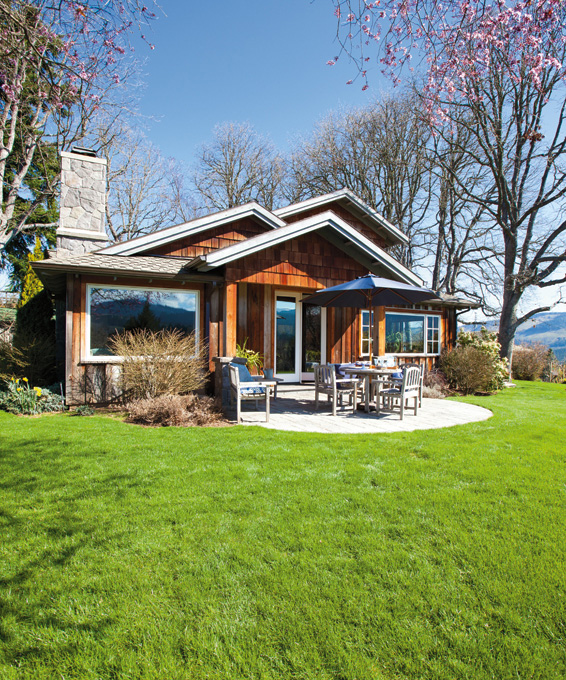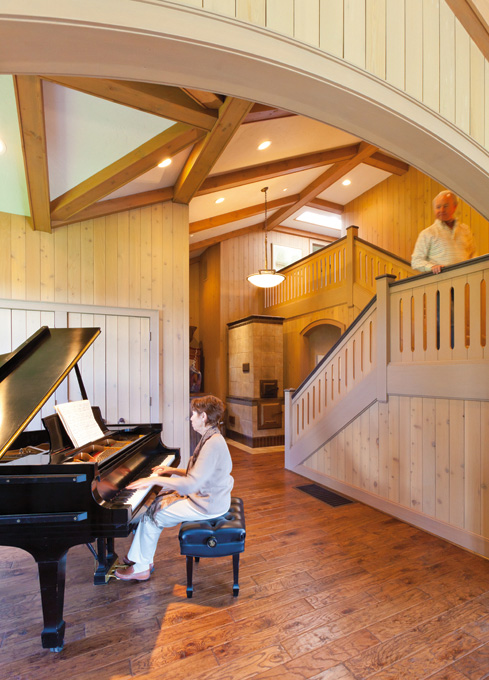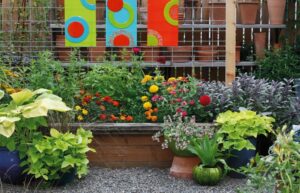|
|
Photo by Susan Seubert |
When Carl and Jeanine Jacobson decided to replace the 1920s farmhouse on their working cherry and pear orchard in the Hood River Valley, they wanted the new home’s design to be influenced by the old, and they took that idea one step further. They deconstructed the old farmhouse, and from those salvaged and recycled materials, they built a new one, whose design pays tribute to the original home. “When we took down the house, we saved all the exterior barn board and the interior cedar paneling,” says Jeanine. “There was no insulation between the siding and paneling. What we found instead was every type of nest you can imagine, squirrels, birds and bees.”
Carl, a retired airline pilot, and Jeanine, a retired music professor, bought the 22-acre orchard in 1975. At the time, they lived in California, but they spent every summer in the original 1,100-square-foot farmhouse nestled among a grove of 13 old oak trees on a small hill with panoramic views.
In 2001, they began to design their new home, working with Lake Oswego-based designer Paden Prichard. “The original house was almost organic in the way it sat in the site,” Prichard says. “They wanted the new house to blend in as if it had always been there. One of the first things I did was to draw a site plan with topography, views and trees to make sure the new house fit as well as the old house.”
Building a house among live oak trees made for complicated construction. “We knew we had to build the house in the middle of those trees,” says David McClure of the David McClure Company in Mt. Hood, who built the house and did all the woodwork. “It was tricky getting the excavation equipment in. We had to work in stages, and as the framing went up, we actually had to cut a few branches because the trees were so close to the house.”
The new home’s two-bedroom, two-bath interior mimics the floorplan of the original home. “The old home was cold and drafty,” says Jeanine.
“We needed a house we could live in full-time. The layout of this house is similar to the old one. All the rooms have the same orientation, but the rooms are larger.”
In the entryway, a custom Russian-style tiled stove, built by Kevin Spencer of Kevin Spencer Masonry in Bend, helps heat the entire house. “We have an infinite supply of wood since this is a working orchard,” says Carl. “So unless it’s really cold, we just load the stove up a couple times a day.”
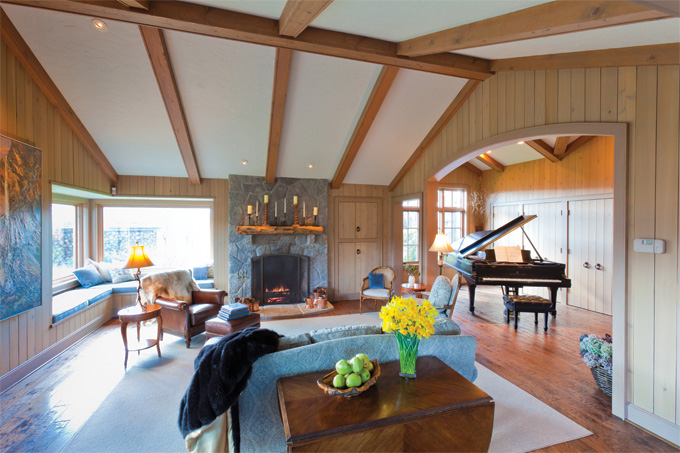 |
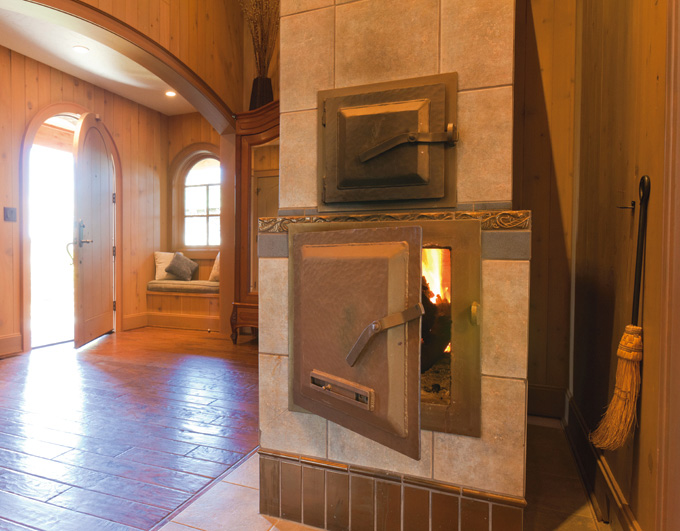 |
The living room and music alcove’s vaulted ceiling and large windows create openness and light. This fireplace was built in the same location as the fireplace in the original house. // Photo by Susan Seubert |
The Russian-style tiled stove helps heat the whole house. “We call it the Romanian stove,” says Jeanine. “On a trip to Romania, our room had one of
|
Jeanine’s concert grand piano sits in an alcove between the entryway and the living room, and her extensive collection of sheet music is stored in a music closet that blends in with the wood paneling. An Oregon basalt fireplace with a mantelpiece carved from a d’Anjou pear tree log reaches to meet the living room’s vaulted ceiling.
Almost every bit of the old house was reused, sometimes in unusual ways. The home required almost no new wood for its construction. The old fir barn siding became the new exterior siding and because the new home, finished in 2004, is 2,700 square feet, additional wood was salvaged from an old barn on a neighboring property. The French doors that originally hung between the living and dining rooms now frame a large square archway between the two spaces. Old apple barn doors were transformed into a new front door. Salvaged flooring became wall paneling in the upstairs bedroom, and the home’s original fireplace was rebuilt in the master bedroom. “When we took down the fireplace, we numbered all the stones,” says Carl. “When we rebuilt it in the bedroom, we raised it off the floor, so we could see the fire, but the stones are set as they were originally.”
The property also provided unexpected finds for the new home. “We found some pedestal sinks in some outbuildings and had them resurfaced for the bathrooms,” says Carl. “When we had to rebuild the farm manager’s home, we saved the clawfoot tub from that house to use in this one.”
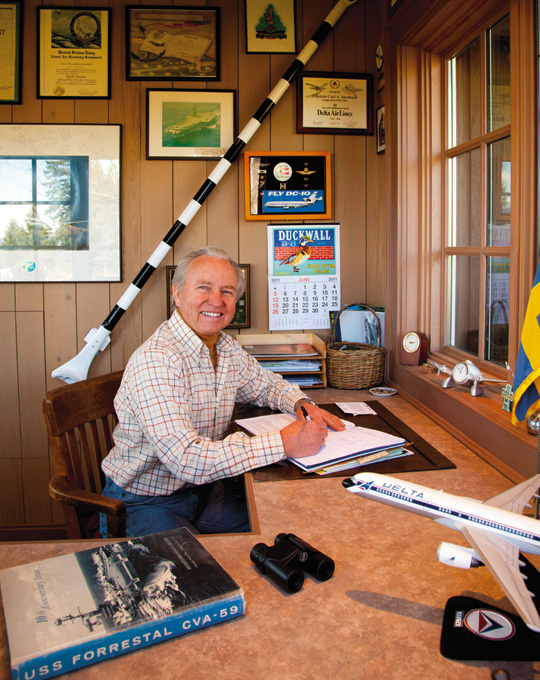 |
|
Carl displays memorabilia from his days as a Navy and commercial pilot in the office off the bedroom. The office, which has windows on three sides, is a replica of the home’s original sleeping porch. // Photo by Susan Seubert |
The large entryway incorporates space for Jeanine to play her concert grand piano and space for a hand-carved Scandinavian-style staircase, reflecting Carl’s Swedish heritage. // Photo by Susan Seubert |
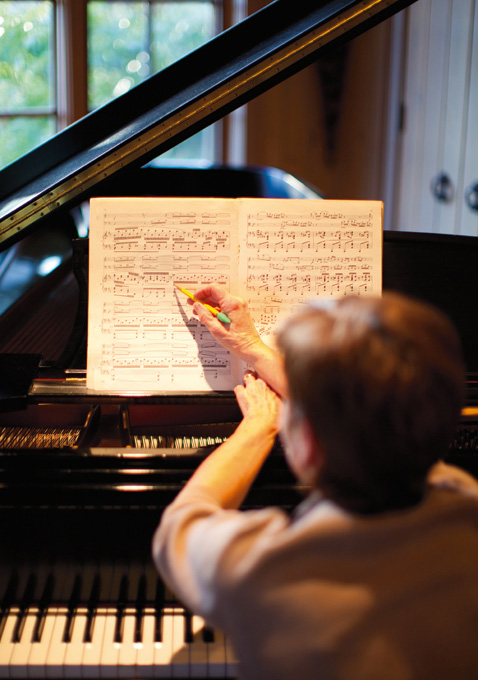 |
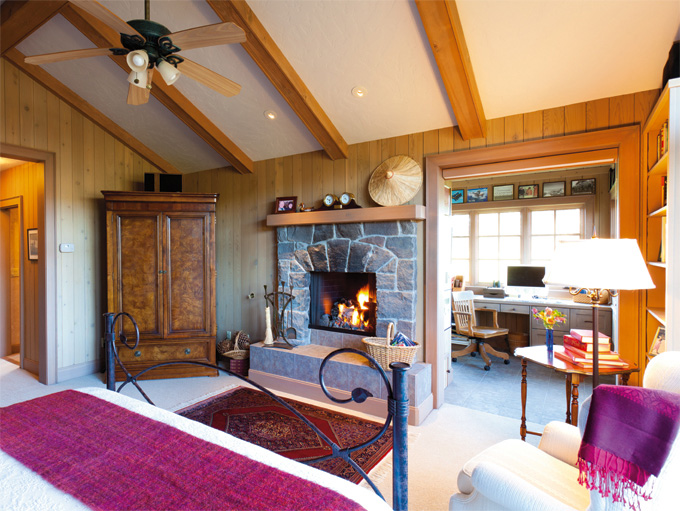 |
Jeanine, a professor emeritus at California State University-Northridge, where she taught music theory and piano pedagogy, annotates a piece of music. // Photo by Susan Seubert |
The original farmhouse fireplace, now in the master bedroom, was given a gas insert to make it easier to maintain. // Photo by Susan Seubert |
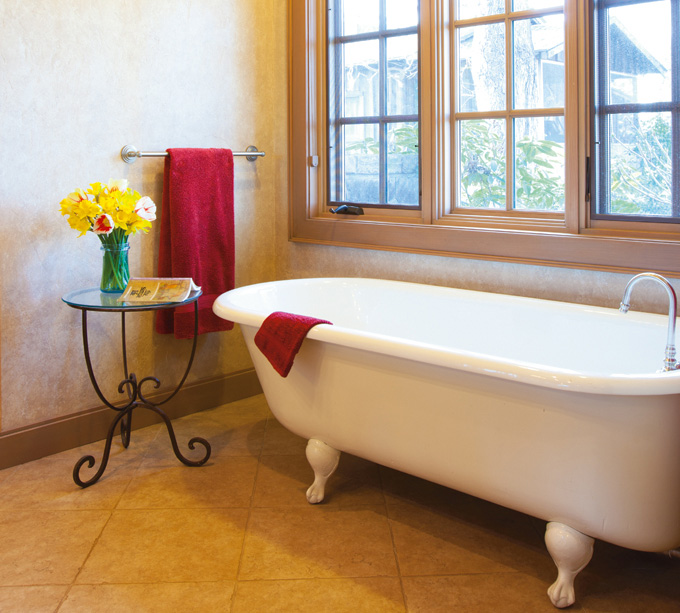 |
Above: The master bath’s resurfaced clawfoot tub is from the orchard’s original foreman’s cabin.Below: An antique table graces the intimate, low-ceilinged dining room. “That table was in my house when I was growing up,” says Carl. “I remember playing underneath it.” // Photos by Susan Seubert |
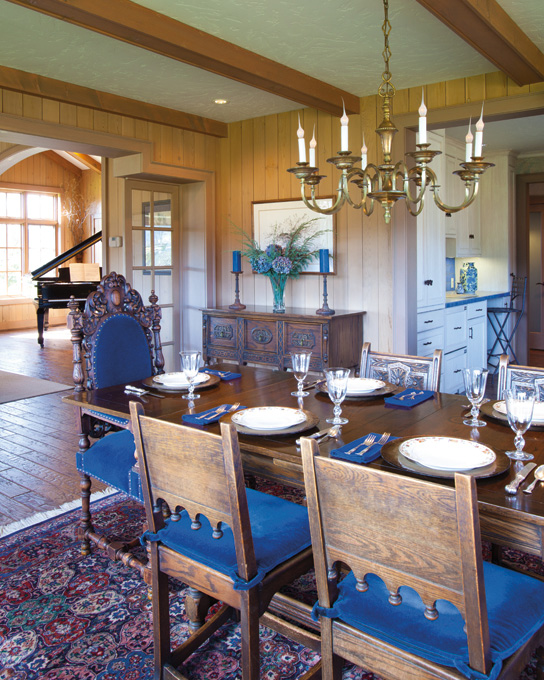 |
Each of the home’s large picture windows frames an unimpeded and distinct view of the countryside. With the exception of a large south-facing window in the upstairs bedroom, the placement of each window was precisely planned during the design phase. “During construction, I went upstairs one day, and I realized I’d never seen that view before because the house had only had one story,” says Jeanine. “I could look down at the trees and see the hills, and I thought it looked like Tuscany. I called Paden and asked what we could do because there wasn’t a window in that direction in the plans. He said we could poke the upstairs out, so now we have this wonderful view upstairs.”
Thoughtful design details add to the home’s appeal. The kitchen cabinets have pulls shaped like cherries and pears, and the baseboards contain shallow drawers holding baking sheets and coloring supplies for visiting grandchildren that can be kicked open with a foot. Artwork by Pacific Northwest artists hangs throughout the home. The curved staircase with its carved railing is one of the home’s standout features. “It’s hard to make those big curves,” says Carl. “To get the staircase right, they had to steam the wood to be able to shape it.”
Even the farmhouse’s original yard was recycled. “We removed every shrub that was around the old house and put them in bark,” says Jeanine. “While we have redone the gardens, we replanted all those shrubs.”
During the 18 months it took to build the house, the Jacobsons lived in a one-room guesthouse on the property and watched as the old home was transformed into the new. “We didn’t want the house to look new,” says Jeanine. “By recycling the old house, we, in a way, got a new house that has always been here.”
How to site a house
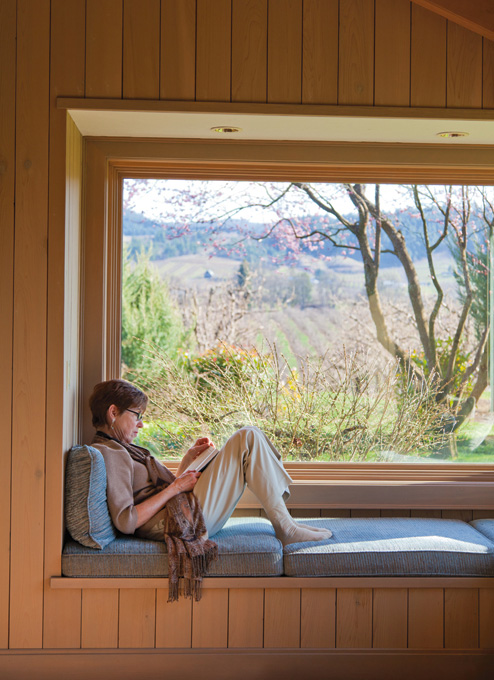 |
Jeanine reads in her living room bay window where she can also admire the pear orchard. // Photo by Susan Seubert |
Study the lay of the land.
“Spend as much time as possible at the site to notice its physical details,” says Paden Prichard of Paden Prichard Design. “Good site understanding is the difference between good and poor house placement.”
Incorporate site features into the design.
“The Jacobsons knew exactly where the sun rose and set on their property,” says Prichard. “They knew what they wanted to see out of every window, and we positioned the house to take advantage of that.”
Build a model of the home.
“The Jacobson site had a lot of constraints because the home and design were so location specific,” says builder David McClure of the David McClure Company. “While on-site, if there was a question about the design, we could look at the model to know where to place things.”


